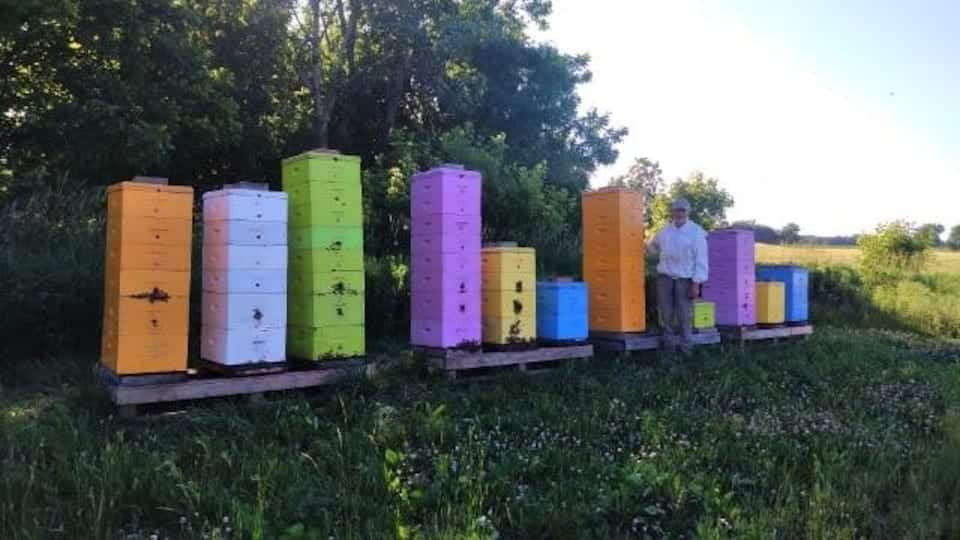In 2020, the estimated total contribution of the Canadian honey and bee industry was between $4 billion and $5.5 billion.
This is the worst ever and I’ve been doing this for 50 years
George Scott told CBC Hamilton.
Mr. Scott is the President of Niagara Beeway, which sources its queen bees from the Carpathian Mountains in Ukraine.
In the Niagara region we have lost thousands of colonies. Most of our operations here are so badly damaged that we will not be providing pollination services this year
did he declare.
We believe, and we can prove, that the loss of farm income in Canada is over $1 billion. So these are farmers who are not going to have that income because pollination is not going to happen.
Eduard Unger owns the BY’s Honey Farm in Niagara-on-the-Lake. He says he has been a beekeeper all his life and the bee mortality this year is unprecedented.
It’s very, very difficult for me […]. I live off my bee farm and it’s 90% lost, that’s huge
Unger told CBC Hamilton.
He says he has tried to rebuild his settlements, but the expenses are very high and he has no income.
We have never had such high bee mortality as we have experienced this season. It’s incredible. People have lost up to 95 or 98% of their bees
said Mr. Unger.
This will have a significant impact on the entire agricultural sector, on all farmers. Wine growers, food producers, blueberry growers, they all want bees from us, they ask us for bees and they can’t get any. I have never seen that.
Some are retiring
Many beekeepers simply retire because they cannot afford to reinvest and replenish the stock with new bees.
adds Scott.
This would be the first year, I believe, in Canadian history that we would not be a net exporter of honey.
The Ontario Beekeepers Association confirms that beekeepers across the province are reporting significant losses.
Massive mortality
A parasite has been affecting Canadian bee colonies for several years. Now, Mr. Scott has a different theory to explain the mass mortality.
I have heard a lot about the parasite, varroa. We have had Varroa for more than 10 years and we manage its presence
did he declare.
We have another problem of truly catastrophic proportions. […] These are fungicides combined with insecticides.
Roy Allemann, President of the Golden Horseshoe Beekeepers’ Association [Association d’apiculteurs de la région du Golden Horseshoe, traduction libre]agrees with Mr. Scott.
This one thinks that overreliance on agricultural chemicals
is a major factor in the increase in bee mortality, especially over the past 10 years.
There are very well-known and effective mite control methods used by many experienced beekeepers, and we have been using them for as long as
Allemann told The Canadian News.
What we suspect is that it’s an overabundance and overuse of chemicals in agriculture, some of which are known bee killers, and there are so many studies done around the world on some of these toxins.
Mr. Allemann points to the pesticides that are used for seed coating.
A total loss of income
He says he normally manages around 120 hives, but has lost just over 40%.
According to Allemann, before the last decade, any loss above 15% was considered bad. This season, he says average losses across Ontario will exceed 60%, and it will likely be the worst year on record for bee mortality.
I have spoken to several beekeepers, some of them quite large, who have lost 80% or more of their bees, and these are people who have between 400 and over 10,000 hives
he said.
This means a total loss of income for a year.
According to Mr. Allemann, while it is still possible to import honey bees from the United States, Europe, Australia, New Zealand or South America, he is concerned that approximately 400 species of native bees are also dying off in large numbers.
No one is trying to replenish stocks, so native bees and pollinators are dwindling in numbers, sometimes quite rapidly, and in danger of disappearing forever.
Reference-ici.radio-canada.ca
